
James Webb Space Telescope MIRI Spectroscopy Animation: The beam of light coming from the telescope is then shown in deep blue entering the instrument through the pick-off mirror located at the top of the instrument and acting like a periscope.
Then, a series of mirrors redirect the light toward the bottom of the instruments where a set of 4 spectroscopic modules are located. Once there, the beam of light is divided by optical elements called dichroics in 4 beams corresponding to different parts of the mid-infrared region. Each beam enters its own integral field unit; these components split and reformat the light from the whole field of view, ready to be dispersed into spectra. This requires the light to be folded, bounced, and split many times, making this probably one of Webb’s most complex light paths.
To finish this amazing voyage, the light of each beam is dispersed by gratings, creating spectra that then projects on 2 MIRI detectors (2 beams per detector). An amazing feat of engineering! Credit: ESA/ATG medialab
Mid-Infrared Instrument Operations Update
The James Webb Space Telescope’s Mid-Infrared Instrument (MIRI) has four observing modes. During setup for a science observation on August 24, a mechanism that supports one of these modes, known as medium-resolution spectroscopy (MRS), exhibited what appears to be increased friction. This mechanism is a grating wheel that allows astronomers to select between short, medium, and longer wavelengths when making observations using the MRS mode. Following preliminary health checks and investigations into the issue, an anomaly review board was convened on September 6 to assess the best path forward.
The Webb team has paused in scheduling observations using this particular observing mode while they continue to analyze its behavior. They are also currently developing strategies to resume MRS observations as soon as possible. The observatory is in good health, and MIRI’s other three observing modes – imaging, low-resolution spectroscopy, and coronagraphy – are operating normally and remain available for science observations.
The Mid-InfraRed Instrument (MIRI) of the James Webb Space Telescope (Webb) sees light in the mid-infrared region of the electromagnetic spectrum, at wavelengths that are longer than our eyes can see.
MIRI allows scientists to use multiple observing techniques: imaging, spectroscopy, and coronagraphy to support the whole range of Webb’s science goals, from observing our own Solar System and other planetary systems, to studying the early Universe.
To pack all these modes in a single instrument, engineers have designed an intricate optical system in which light coming from Webb’s telescope follows a complex 3D path before finally reaching MIRI’s detectors.
This artist’s rendering shows this path for MIRI’s imaging mode, which provides imaging and coronagraphy capabilities. It also contains a simple spectrograph. We first take a look at its mechanical structure with its three protruding pairs of carbon fiber struts that will attach it to Webb’s instrument compartment at the back of the telescope.
The pick-off mirror, acting like a periscope, receives the light from the telescope, shown in deep blue, and directs it into MIRI’s imaging module. Inside the instrument, a system of mirrors reformats the light beam and redirects it till it reaches a filter wheel where the desired range of mid-infrared wavelengths is selected from a set of 18 different filters each with its own specific function (the beam takes a light blue color in the animation).
Lastly, another set of mirrors takes the light beam coming out of the filter wheel and recreates the image of the sky on MIRI’s detectors.
Credit: ESA/ATG medialab

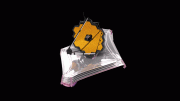
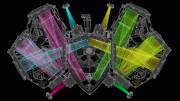
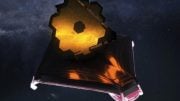

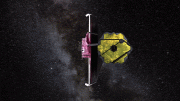
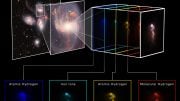
The confirmation of perfect working state of JWST’s MIRI spectrograph and right observations of early universe support còsmoĺogy,unless are theories by producing a rational images of dìsk(or spiral) and irregular shaped galaxies;a third type of galaxy of eĺiptical shape is resulted due to merge of two or more galaxies.
The Universe hàs a dynamics for big bang.Early galaxies are either disk shaped or irregular shaped.Observations of JWST early galaxies’ images accounts statisticaĺly to the domìnation of disk shaped galaxies in the early universe after big bang ìs a resuĺtant factòr of Universe Dynamics.However,a third týpe of galaxies are alsò present elliptical shaped evolved due to merge of previous two classes of galaxies
If this is a manufacturing failure don’t be concerned. Morton Thiakol walked away scot free. The contractor that failed on the Hubble’s mirrors suffered naught. Our government never has interest in hold multibillionaire corporations responsible for keeping their word.
This has been alerted before,own effort of JWST is necessary to watch coevolution phenomena of super massive black hole and stars in galaxy below the .5 billion years after big bang in scale towards the origin.So,starting from the first effotless observation of early galaxies,calculation stress on JWST must be regulated for right functioning.Thanks to the engineers and astrophysicsts forcarefully calibrated systemetic operatioñs of JWST instruments.